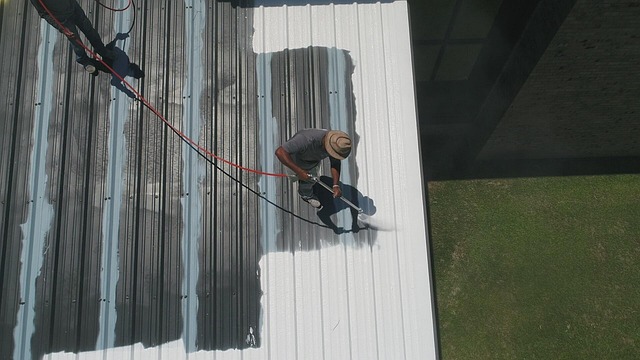Managing remodeling expenses is key to successful home renovations. Homeowners should create detailed budgets including visible and intangible costs, research market rates for contractors and materials, and consider DIY methods, second-hand materials, and reconfiguring existing furniture to reduce expenses. Strategic cost management through goal setting, task prioritization, regular budget reviews, and proactive planning ensures staying on track. Investing in energy-efficient upgrades can lead to long-term savings on utility bills, making renovations a smart financial decision.
Renovating your space doesn’t have to break the bank. In this comprehensive guide, we demystify affordable solutions for managing renovation costs. From understanding intricate remodeling expenses to uncovering creative cost-cutting measures without sacrificing quality, our strategies equip you with the tools to navigate the process smoothly. We explore smart budgeting techniques and highlight long-term savings through energy-efficient upgrades. By the end, you’ll be ready to embark on your renovation journey with confidence and a leaner wallet.
Understanding Remodeling Expenses: A Comprehensive Overview
Renovation projects often come with a steep price tag, but understanding remodeling expenses is the first step to keeping costs manageable. When tackling any remodel, it’s crucial to recognize that expenses can vary greatly depending on factors like project size, complexity, and your location. Start by creating a detailed budget outlining not just the visible aspects (new appliances, flooring) but also less tangible costs like labor, permits, and unexpected repairs.
Don’t forget to research current market rates for contractors and materials to ensure your budget is realistic. A thorough understanding of remodeling expenses empowers you to make informed decisions, negotiate better with professionals, and stick to your financial goals throughout the entire renovation process.
Creative Ways to Reduce Costs Without Compromising Quality
Renovation projects often come with a hefty price tag, but that doesn’t mean you can’t achieve remarkable transformations on a budget. Creative cost-cutting strategies can help manage remodeling expenses while still delivering high-quality results. One effective approach is to focus on DIY (Do-It-Yourself) endeavors. Many renovation tasks, such as painting, simple plumbing fixes, or basic electrical work, can be tackled by homeowners with the right tools and a bit of know-how. This not only reduces labor costs but also empowers you to customize your space precisely to your taste.
Additionally, exploring second-hand materials and resources can significantly impact your budget. Reclaimed wood, vintage fixtures, and architectural salvages offer unique aesthetic appeal while being earth-friendly and cost-effective. Online marketplaces and local thrift stores are treasure troves for such finds. Moreover, consider reconfiguring existing furniture or pieces you already own to suit new purposes, adding a fresh look without any financial strain. These creative solutions prove that quality renovations aren’t always a matter of expensive materials but often lie in clever design and resourcefulness.
Smart Budgeting Strategies for Successful Renovations
Staying within budget is a top priority for anyone tackling renovation projects, as managing remodeling expenses can feel like navigating a complex maze. Smart budgeting strategies are essential tools to keep costs in check and ensure your renovation dreams become a reality without breaking the bank. Start by defining your goals and creating a detailed plan; this involves prioritizing what needs repairing or updating and setting realistic financial boundaries.
Break down your project into manageable tasks and estimate costs for each. Be sure to account for unexpected expenses that may arise, as they can quickly add up. Regularly reviewing your budget throughout the renovation process is crucial. Adjustments might be necessary due to changes in material costs or unforeseen challenges. Keep track of receipts, and consider using budgeting apps or spreadsheets to monitor spending and ensure you’re on course with your financial goals for the project.
Long-Term Savings: Investing in Energy-Efficient Upgrades
Investing in energy-efficient upgrades during your renovation can lead to significant long-term savings on your utility bills. While the upfront costs might be higher for energy-efficient appliances, insulation, and windows, these improvements pay off over time by reducing your home’s energy consumption. As you plan your remodeling expenses, consider the environmental and financial benefits of opting for energy efficiency.
By choosing eco-friendly options, you not only contribute to a greener planet but also gain control over your renovation budget in the long run. These upgrades ensure that your home is better insulated, reducing heating and cooling costs year-round. Over time, the savings on utility expenses can offset the initial investment, making your renovation a smart financial decision.
Renovating doesn’t have to be a costly endeavor. By understanding your remodeling expenses, employing creative cost-reducing strategies, and adopting smart budgeting techniques, you can successfully navigate the renovation process while staying within your budget. Additionally, investing in energy-efficient upgrades offers long-term savings and contributes to a more sustainable home. With these affordable solutions, managing renovation costs has never been easier or more rewarding.
